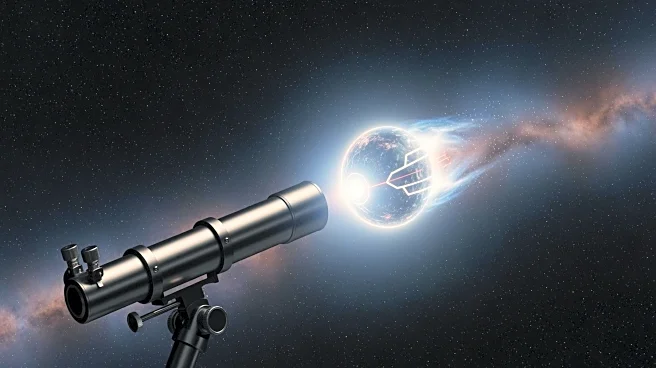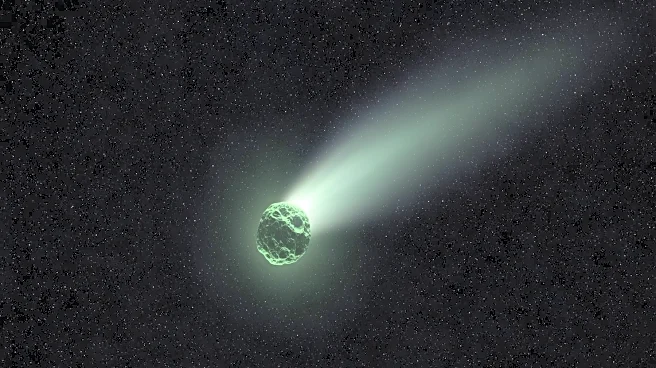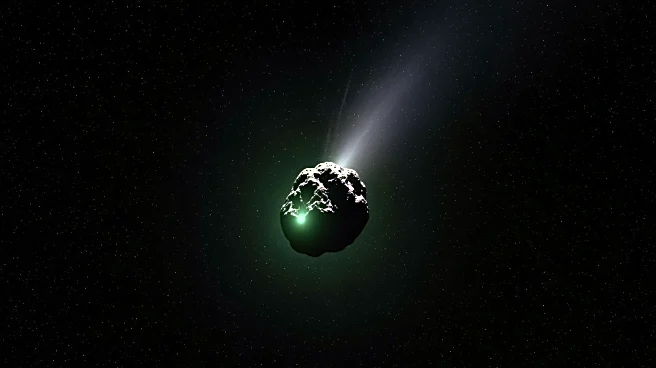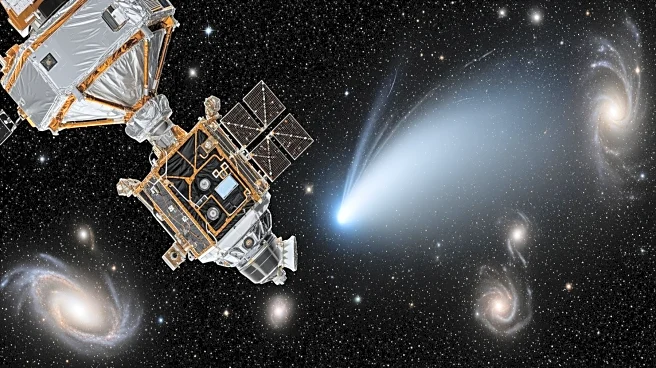What's Happening?
The interstellar object 3I/ATLAS, comparable in size to Manhattan, has recently passed the Sun and is now moving towards Jupiter. Notably, new images reveal that the object lacks a cometary tail, which
challenges conventional explanations for its behavior. Typically, such an object would exhibit a tail of debris due to the Sun's influence, but this is absent in the case of 3I/ATLAS. Harvard astrophysicist Avi Loeb suggests that this anomaly could indicate the object is not a natural comet, but potentially an artificial alien craft. The object first entered the Solar System on June 14 and is being observed by NASA and the European Space Agency as it continues its journey.
Why It's Important?
The absence of a cometary tail on 3I/ATLAS could have significant implications for our understanding of interstellar objects. If the object is indeed artificial, it would suggest the presence of advanced extraterrestrial technology, challenging current scientific paradigms. This development could impact future space exploration strategies and the search for extraterrestrial life. The scientific community and space agencies are closely monitoring the object to gather more data, which could either confirm or refute the hypothesis of its artificial nature.
What's Next?
As 3I/ATLAS continues its trajectory towards Jupiter, further observations are planned. NASA and the European Space Agency will utilize orbiters to collect more data, which could provide clarity on the object's nature. The release of high-resolution images from NASA's Mars Orbiter's HiRISE camera is anticipated, although delayed due to a government shutdown. These images are expected to offer more insights into the object's characteristics and behavior.











